
Smarter email, faster business.
Auto-tag, parse, and respond to RFQs, quotes, orders, and more — instantly.
CFM LEAP Engine Production, Durability, and Spare Parts Outlook for 2025
January 21, 2025By ePlane AI
0
0
CFM LEAP
Engine Durability
Spare Parts
More news

Airline Executives Address Data Fragmentation, AI, and Consumer Behavior
Airline Executives Address Data Fragmentation, AI, and Consumer Behavior
The aviation industry has long integrated machine learning and artificial intelligence (AI) into various operational areas, including dynamic pricing and predictive maintenance. As AI technologies advance rapidly, airline executives are now turning their attention to the transformative potential of AI in customer service, marketing, and retail.
AI in Customer Service and Retail Transformation
At Phocuswright Europe 2025, Olaf Backofen, head of global retail partnerships for Lufthansa Group, discussed a recent pilot project involving the AI assistant Swifty in collaboration with SWISS. This initiative offered travelers a conversational booking experience. Although market research indicated that the majority of customers still prefer traditional booking methods, younger demographics, particularly Generation Z, are showing increasing openness to conversational AI interfaces.
Filip Filipov, chief operating officer at AI specialist OAG, joined Backofen in emphasizing the critical need for enhanced collaboration and data sharing across the aviation sector to fully harness AI’s capabilities. Filipov remarked that this period marks a significant shift, with airlines and related industry players beginning to connect disparate data points across the customer and traveler journey.
Challenges of Data Fragmentation and Legacy Systems
Despite the enthusiasm surrounding AI, both executives acknowledged persistent challenges, notably data fragmentation and outdated legacy systems. Fragmented data complicates the integration of real-time insights into consumer behavior, demand fluctuations, and competitor pricing—elements essential for effective AI-driven marketing strategies. While some airlines have successfully employed AI for targeted advertising and personalized offers, others continue to grapple with privacy concerns and the technical difficulties of consolidating diverse data sources.
Backofen underscored the necessity of developing a unified booking system comparable to the seamless experiences provided by leading e-commerce platforms. He explained, “We need to have one database, which enables us to have in one passenger name record the possibility to buy tickets, ancillaries, and everything else. But it will take four to five years until we have this in place.”
Industry Trends and Consumer Behavior
The discussion also highlighted broader industry trends, including the exploration of new retail channels such as social media platforms for selling tickets and ancillary products. Competitors are increasingly adopting AI tools to enhance both customer service and operational efficiency.
Shifts in consumer behavior continue to influence airline strategies. Market responses to AI-driven initiatives vary widely; some brands have successfully implemented targeted campaigns, while others face challenges balancing personalization with privacy concerns. In markets like Canada, limited competition among discount carriers has resulted in higher fares, prompting calls for increased foreign competition to reduce prices—an issue that AI and data integration alone cannot resolve.
As the aviation sector confronts these complexities, executives concur that addressing data fragmentation and embracing AI-driven innovation will be essential to meeting evolving consumer expectations and sustaining competitiveness in a rapidly changing environment.
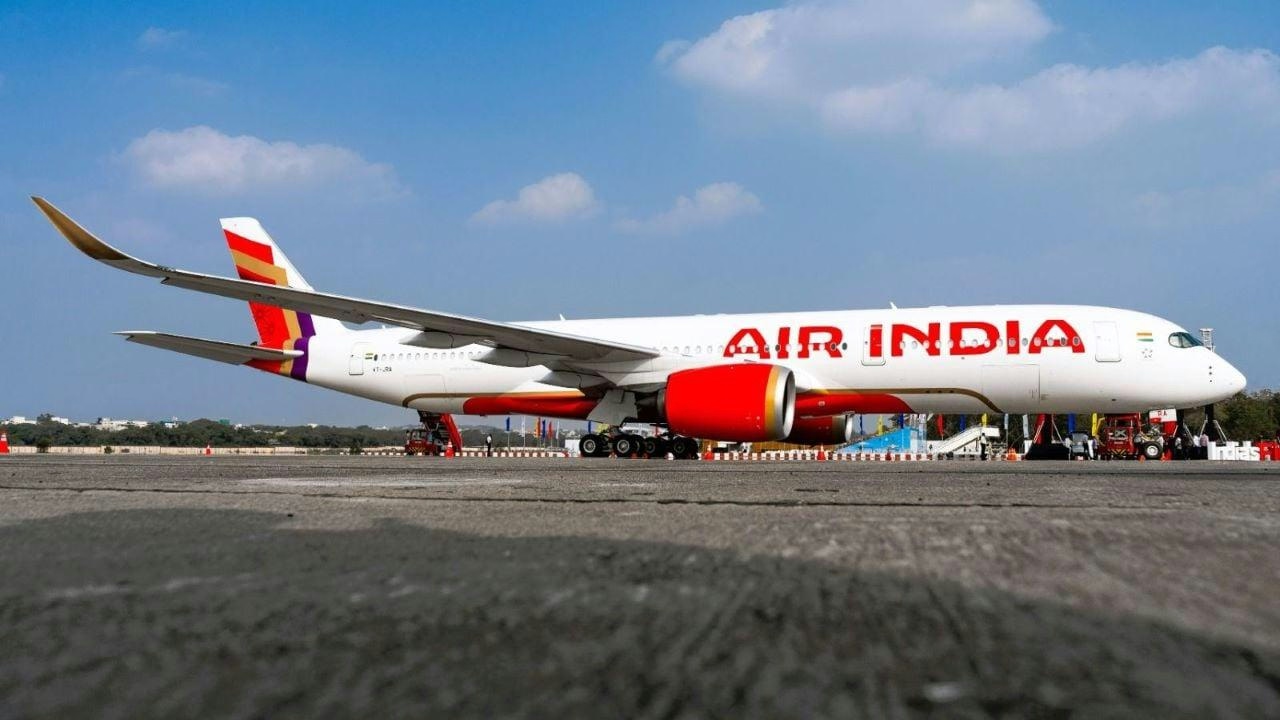
Air India Flight from Tokyo to Delhi Diverted to Kolkata Over Cabin Heat Problem
Air India Flight from Tokyo to Delhi Diverted to Kolkata Due to Cabin Heat Issue
Air India faced renewed operational challenges over the weekend when flight AI357, traveling from Tokyo’s Haneda Airport to Delhi, was diverted to Kolkata after the crew detected unusually high temperatures in the cabin. The incident, which occurred on June 29, has intensified concerns about the airline’s safety and reliability, especially in the aftermath of the deadly Ahmedabad crash earlier this month.
Details of the Diversion and Passenger Response
An Air India spokesperson confirmed that the diversion was a precautionary measure taken after persistent warmth was experienced inside the aircraft cabin. The flight landed safely in Kolkata, where the plane is currently undergoing thorough technical checks. Passengers were assisted by ground staff, provided with refreshments, and offered alternative arrangements to complete their journey to Delhi. The airline expressed regret for the inconvenience caused and assured that all necessary support was being extended to those affected.
Context of Recent Operational Setbacks
This incident follows a series of disruptions that have raised questions about Air India’s operational integrity. Just two days prior, flight AI639 from Mumbai to Chennai returned to Mumbai shortly after takeoff due to a burning smell detected in the cabin. Passengers were safely transferred to another aircraft. On the same day, a non-specific security alert on a separate Air India flight led to standard security procedures before the aircraft was cleared for departure. Additionally, an Air India Express flight from Delhi to Jammu was forced to turn back mid-flight because of a technical issue, with passengers subsequently accommodated on a different plane.
These repeated operational challenges come in the shadow of the June 12 crash of Flight AI-171 near Ahmedabad, which resulted in 260 fatalities. The tragedy has prompted intensified internal inspections and heightened regulatory scrutiny across India’s aviation sector.
Implications for Air India’s Future
The diversion of the Tokyo-Delhi flight also raises concerns about the progress of Air India’s Vihaan.AI transformation program, an ambitious initiative aimed at modernizing the airline and restoring its reputation. Industry analysts caution that ongoing operational issues could erode customer confidence and investor trust, potentially hindering the airline’s momentum at a critical time. Market observers have noted that persistent safety and reliability problems may create opportunities for competitors to capture market share if Air India does not address these challenges promptly.
As Air India seeks to reassure passengers and stakeholders, the airline faces increasing pressure to demonstrate concrete improvements in safety and operational reliability to safeguard its brand and maintain its position in a highly competitive aviation market.

Pulsus CEO Calls for Aviation University and MRO Facility Near Bhogapuram Airport
Pulsus CEO Advocates for Aviation University and MRO Facility Near Bhogapuram Airport
Strategic Proposal to Boost Regional Economy
VIZIANAGARAM — Gedela Srinubabu, Chief Executive Officer of the Pulsus Group, has urged both the Union and State governments to establish an Aviation University and a Maintenance, Repair, and Overhaul (MRO) facility adjacent to the forthcoming international airport at Bhogapuram. The airport is scheduled to commence operations by June 2026. Speaking to the media, Srinubabu underscored the potential of these initiatives to significantly accelerate economic growth along the Srikakulam-Vizianagaram-Visakhapatnam corridor.
He projected that North Andhra could generate up to $500 billion in economic activity over the next two decades, contingent on swift government action aligned with the Vision-2047 framework endorsed by Chief Minister N. Chandrababu Naidu. Srinubabu emphasized the increasing national emphasis on aircraft maintenance, particularly in light of recent aviation incidents, and argued that an MRO facility at Bhogapuram would rapidly create thousands of jobs. He further highlighted that the establishment of an Aviation University would provide vital educational opportunities for local students aspiring to careers in aviation.
Challenges and Competitive Landscape
Despite the optimistic outlook, the proposal faces considerable challenges. The Bhogapuram region would need to contend with established MRO hubs in central India, notably Bhopal, where Inavia Aviation has recently invested $18 million to expand its operations. Industry experts have expressed reservations about the viability of launching a new aviation university and MRO facility in North Andhra, given the substantial investments already underway in other regions. The competitive response from existing aviation firms may include strategic expansions aimed at protecting their market share, thereby intensifying competition for both capital and skilled personnel.
Regional Development and Collaborative Efforts
Nonetheless, Srinubabu remains confident in the transformative potential of the region. He cited ongoing and planned projects such as pharmaceutical hubs in Vizianagaram-Srikakulam, the construction of a sea port at Mulapeta, and a proposed cargo airport in Palasa, Srikakulam district. He asserted that the phased realization of Vision-2047’s objectives could effectively eliminate the region’s historical economic disadvantages.
Srinubabu also indicated that the Pulsus Group, which specializes in health informatics, is ready to partner with government authorities to implement training programs aimed at developing a skilled workforce in Andhra Pradesh. The call for an aviation university and MRO facility near Bhogapuram arrives as the region seeks to establish itself as a significant investment destination, while navigating skepticism and competitive pressures from entrenched industry players.
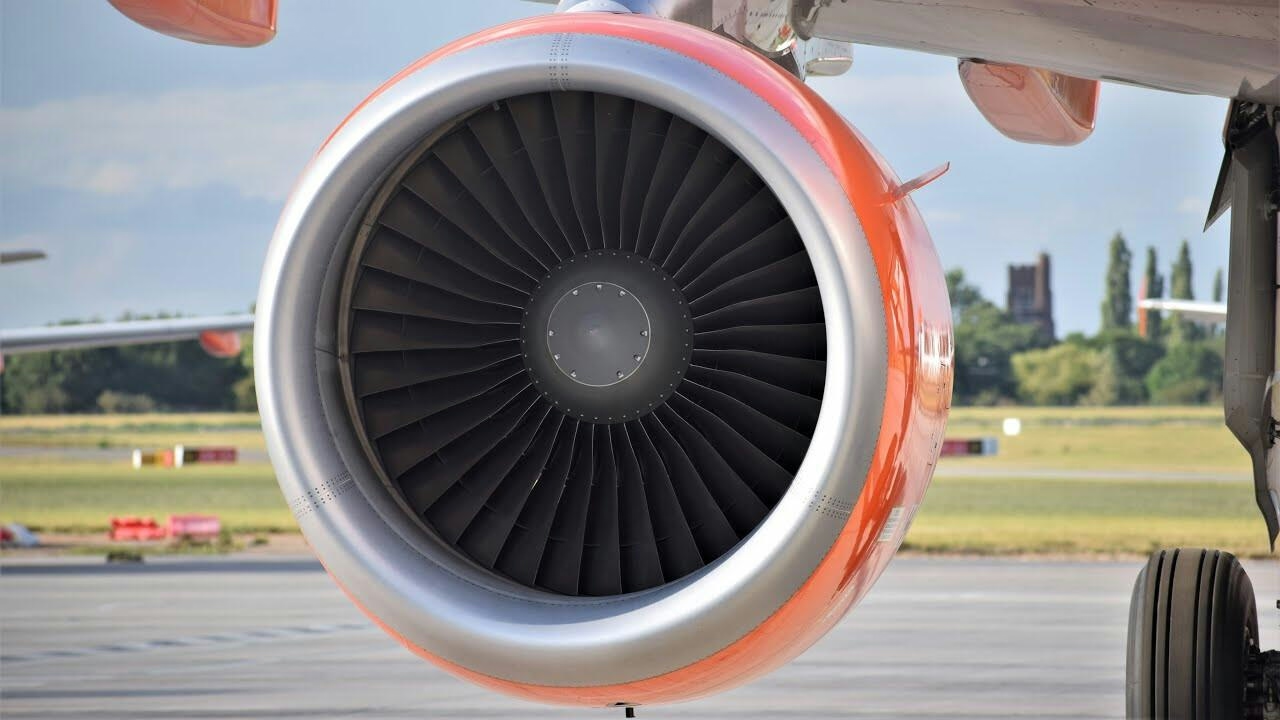
Comparing the Power of IAE V2500 and CFM56 Engines
Comparing the Power of IAE V2500 and CFM56 Engines
The IAE V2500 and CFM56 engine families represent two of the most successful and widely utilized turbofan engines in the history of commercial aviation. Developed through international collaborations, these engines have powered thousands of aircraft globally and continue to hold significant roles in both commercial and military aviation sectors.
Engine Makers and Collaborative Ventures
The IAE V2500 is the product of International Aero Engines AG, a consortium comprising Pratt & Whitney, Japanese Aero Engines Corporation, and Germany’s MTU Aero Engines. The designation “V” in V2500 reflects the five original consortium members, while “2500” denotes the initial model’s thrust rating of 25,000 pounds. Pratt & Whitney, headquartered in East Hartford, Connecticut, remains a principal contributor to the V2500’s development and production.
Conversely, the CFM56 was developed by CFM International, a joint venture between GE Aerospace (formerly General Electric) and France’s Safran (formerly Snecma). This partnership has resulted in the CFM56 becoming the most delivered engine in its class, with production exceeding 34,000 units to date.
Aircraft Applications and Performance Characteristics
The V2500 engine powers several notable aircraft, including the now-retired McDonnell Douglas MD-90, the first-generation Airbus A320 family, and the Embraer C-390 Millennium military transport. Although the Airbus A320neo has transitioned to newer engines such as the CFM International LEAP, the V2500 remains in production for military applications. The V2500-E5 variant, employed on the C-390 Millennium, delivers thrust up to 31,000 pounds. Pratt & Whitney asserts that the V2500 remains the quietest and most fuel-efficient engine option for the Airbus A320ceo family.
The CFM56 family offers a thrust range spanning from 18,500 to 34,000 pounds, depending on the specific variant. It has powered a diverse array of aircraft, including the Airbus A320ceo, Boeing 737 Classic and Next-Generation series, Boeing KC-135R Stratotanker, and Douglas DC-8-70. The CFM56-5B and -7B represent the latest production models, reflecting continuous updates since the engine’s initial run in 1974 and its entry into service during the 1980s.
Market Dynamics and Industry Challenges
Evaluating the power and market appeal of the V2500 and CFM56 extends beyond thrust ratings alone. Airlines and operators must weigh the high initial acquisition costs alongside the critical need for comprehensive maintenance, repair, and overhaul (MRO) services. Fuel efficiency and technological complexity are pivotal factors influencing market preferences, with Pratt & Whitney’s newer geared turbofan (GTF) engine currently leading in fuel economy.
Both engine families face mounting pressure from increasingly stringent emissions regulations and the aviation industry’s exploration of alternative propulsion technologies, including electrification. Recent developments highlight the continued relevance of the V2500, particularly within Pratt & Whitney’s aftermarket business, as well as Airbus’s efforts to recalibrate its supply chain to mitigate material shortages affecting engine deliveries.
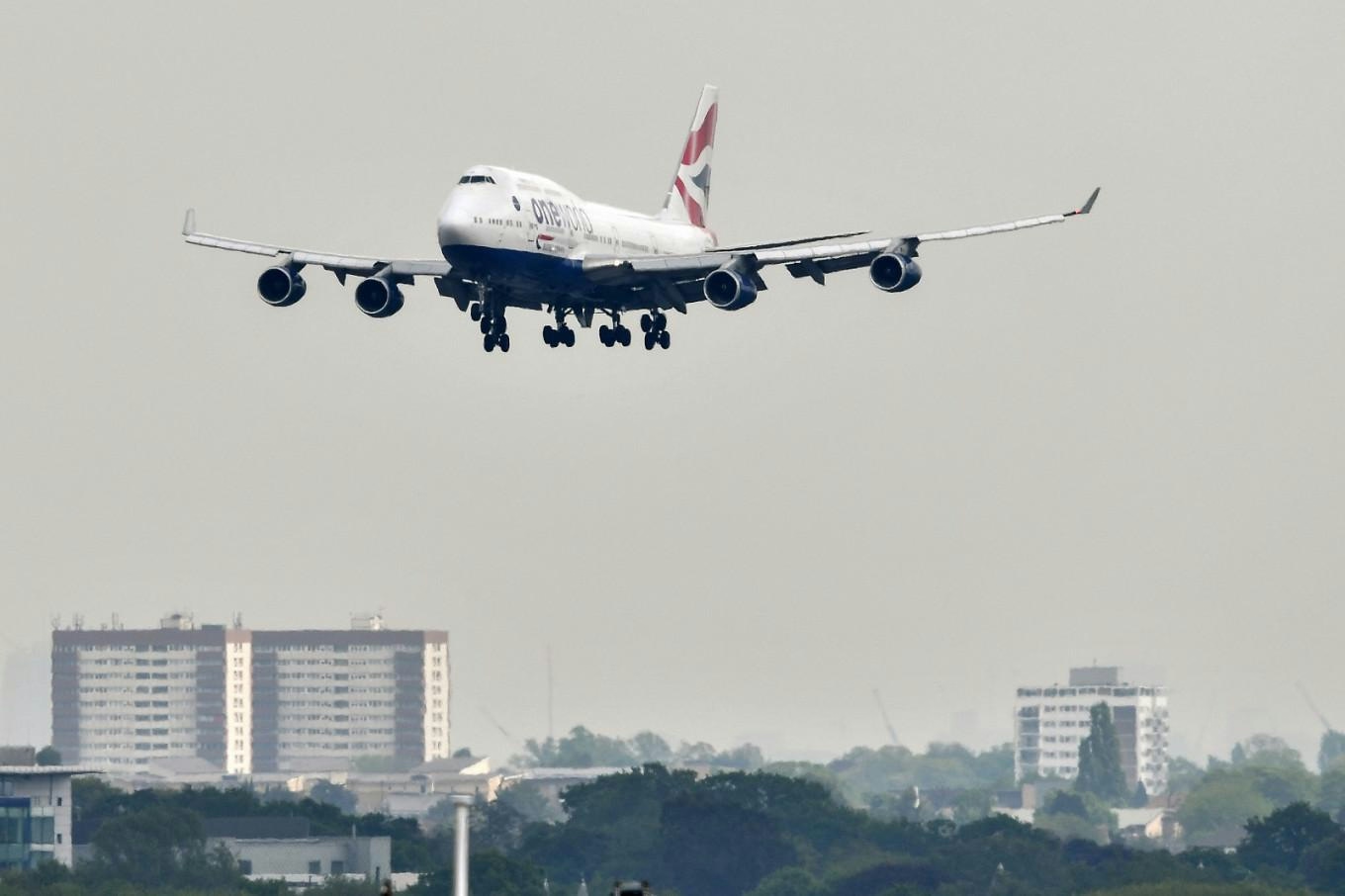
Delivery Delays Push Back Retirement of Airbus A380 and Boeing 747
Delivery Delays Postpone Retirement of Airbus A380 and Boeing 747 at Korean Air
Korean Air has announced it will continue operating its aging Airbus A380 and Boeing 747-8 aircraft for several more years due to persistent delivery delays from both Airbus and Boeing. The airline’s original plan, as outlined by CEO Walter Cho, was to retire these iconic double-decker jets by 2026. However, ongoing setbacks in aircraft deliveries have compelled Korean Air to revise its fleet renewal timeline.
Impact of Delivery Shortfalls on Fleet Modernization
Korean Air’s current fleet comprises six Airbus A380s with an average age of 11.6 years and 18 Boeing 747-8s averaging 11.9 years, alongside 46 Boeing 777s that have been in service for approximately 12.3 years. The airline is awaiting the delivery of around 20 aircraft from each manufacturer, a shortfall that has made it impossible to phase out the older models as initially planned. CEO Cho emphasized that until the new aircraft arrive, the older A380s, 747-8s, and some of the aging 777s will remain in operation.
These delivery delays are part of a broader industry-wide challenge. Airbus, for instance, experienced a 4% decline in deliveries in May, with total deliveries for the year down 5% compared to the same period last year. Reuters reports that only 359 planes were delivered in the first four months of the year, significantly below the forecasted 1,430. This bottleneck is hindering growth in the commercial aviation sector and has led some airlines to contemplate legal action. Despite these difficulties, Airbus maintains its annual delivery target of 820 aircraft, though production and delivery rates continue to raise concerns.
Korean Air’s Current Operations and Future Fleet Plans
At present, Korean Air operates six A380s, two of which are currently parked. The airline is also set to acquire eight additional A380s from Asiana Airlines following the completion of their merger. It remains uncertain whether the interiors of these incoming aircraft will be updated to align with Korean Air’s distinctive configuration, which includes two separate bars for First and Business class passengers and a duty-free boutique located at the rear of the lower deck.
Korean Air is now one of only three airlines worldwide still flying the Boeing 747-8, alongside Air China and Lufthansa. CEO Cho reiterated the airline’s commitment to phasing out these older aircraft as soon as the new deliveries are fulfilled.
Looking ahead, Korean Air’s fleet expansion remains ambitious. The airline has over 40 Airbus A321neos on order, in addition to four A350-900s and 27 A350-1000s. On the Boeing side, Korean Air is awaiting more than 24 737 MAX 8s, 20 777-9s, six 787-9s, and 31 787-10s, with deliveries scheduled through 2028. To address immediate passenger demand, the airline is also retrofitting four Boeing 777-300ERs with new Prestige Suites 2.0 cabins.
Until the arrival of these new aircraft, Korean Air’s Airbus A380s and Boeing 747-8s—once slated for retirement—will continue to be a familiar presence in the skies.
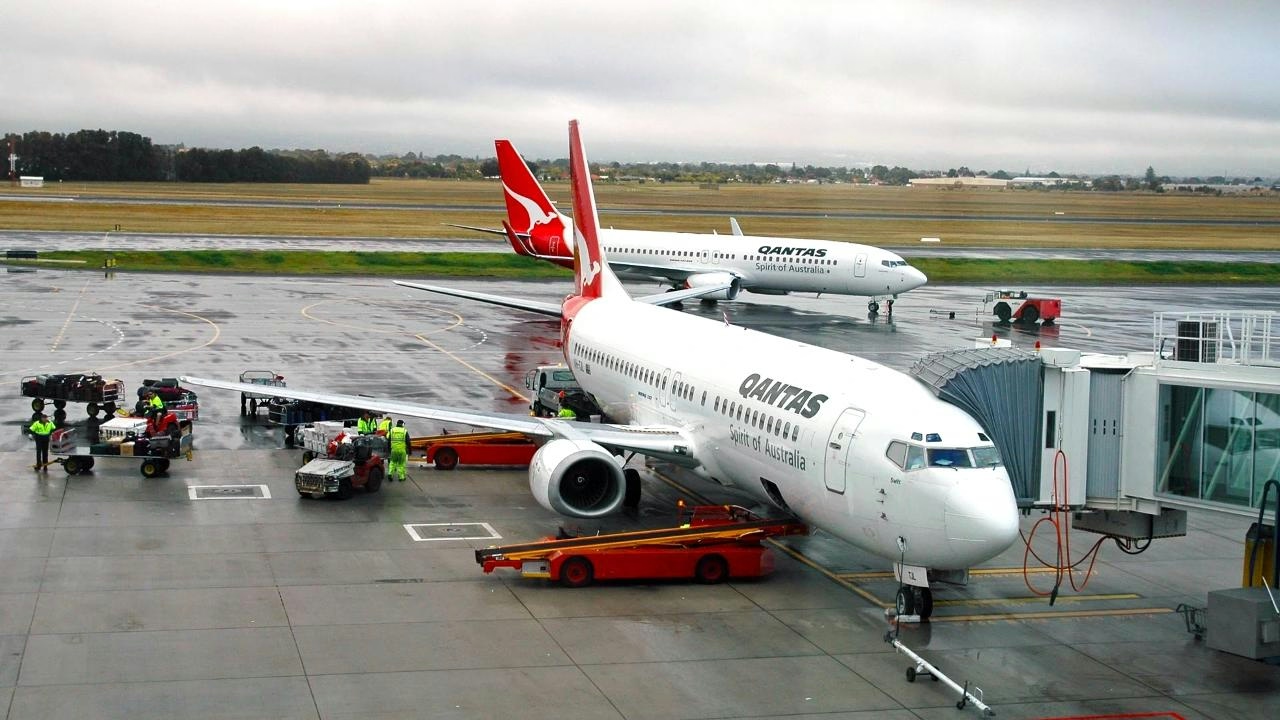
Qantas Leases Boeing 737s Amid Airbus A321XLR Delivery Delays
Qantas Leases Boeing 737s Amid Airbus A321XLR Delivery Delays
Addressing Capacity Challenges with Leased Aircraft
Qantas Airways has announced plans to lease four additional Boeing 737-800 aircraft to strengthen its domestic capacity in response to ongoing delays in the delivery of its new Airbus A321XLR jets. These leased 737s, described as “midlife” aircraft, are expected to enter service by the end of 2025, serving as a temporary solution to the shortfall caused by postponed Airbus deliveries.
The first Airbus A321XLR, initially scheduled for delivery earlier this year at Sydney Airport, is now expected to arrive next week, approximately three months behind the original timeline. This delay is part of a wider industry trend, with Airbus reporting a 4% decline in deliveries in May 2025 amid persistent production and supply chain difficulties. Such setbacks have led some airlines to contemplate legal action against manufacturers, while the market has expressed skepticism regarding interim fleet strategies, including Qantas’ decision to lease older aircraft models.
To maintain operational resilience, Qantas plans to partially upgrade the cabins of the leased Boeing 737-800s upon their entry into service. A comprehensive retrofit, designed to align the interiors with the airline’s next-generation cabin concept intended for the A321XLRs, will be implemented at a later stage.
Fleet Modernization and Cabin Refurbishment
The Airbus A321XLR represents a critical component of Qantas’ fleet modernization strategy, aimed at enhancing service across key hubs such as Melbourne and Brisbane, as well as improving both domestic and short-haul international operations. The delay in its arrival has temporarily disrupted the airline’s transition to a more modern and fuel-efficient fleet.
Concurrently, Qantas is undertaking an extensive cabin refurbishment program for its existing fleet of 42 Boeing 737s. This initiative forms part of a broader effort to elevate the passenger experience, featuring new seats, redesigned sidewalls, updated mood lighting, new carpets, and larger overhead bins capable of accommodating 50% more carry-on luggage. These upgrades are intended to closely mirror the interiors of the incoming Airbus A220 and A321XLR aircraft. The airline will continue to offer fast and free in-flight Wi-Fi on the retrofitted jets. The first fully refurbished 737 is scheduled to return to service in 2027.
The enhanced 737 fleet will continue to operate across Qantas’ domestic network and on short-haul international routes to destinations including Fiji, Vanuatu, and New Zealand. These improvements are designed to ensure service continuity and passenger comfort until the full transition to the new Airbus fleet is complete.
Qantas’ long-term fleet plan envisions replacing its Boeing 737s with Airbus A321XLRs and A220s. As of mid-2025, five Airbus A220s are already in active service, supporting the airline’s operational flexibility and sustainability objectives.
Industry-Wide Implications
The persistent delays in aircraft deliveries reflect broader challenges confronting the aviation industry. Qantas’ approach exemplifies how airlines are adapting to these disruptions by seeking alternative solutions to maintain capacity and service standards. As uncertainty around production timelines continues, other carriers may also explore similar strategies to manage their fleet requirements amid an evolving and complex market environment.
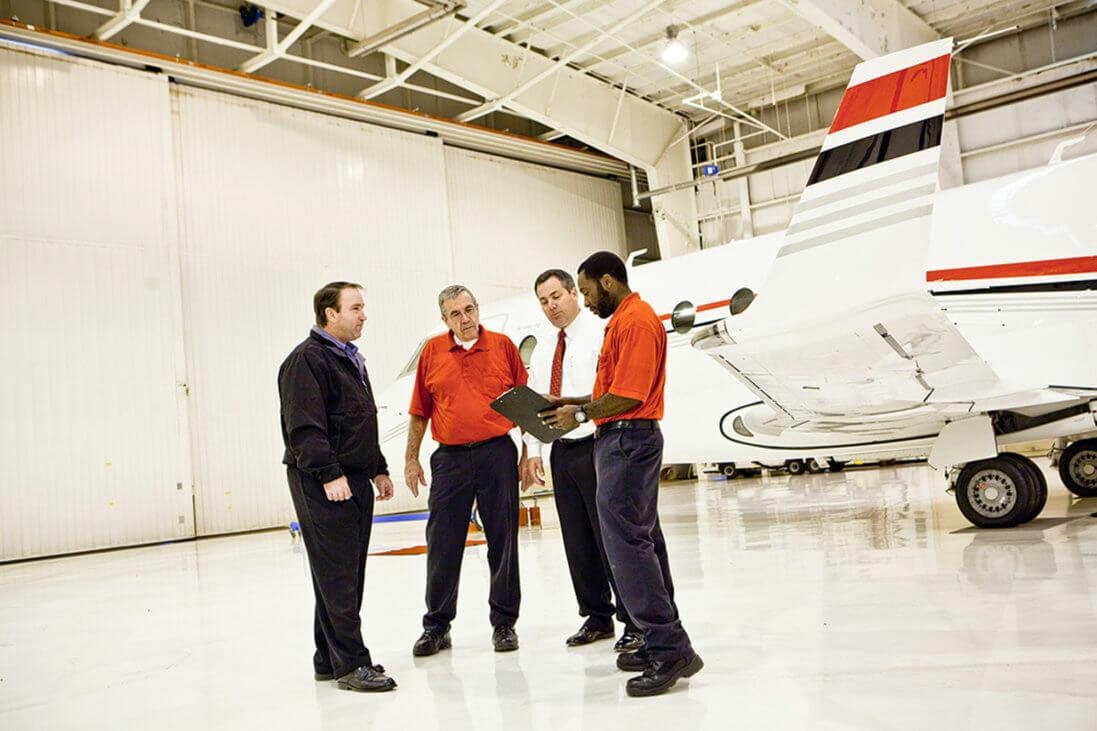
Key Aviation Experts to Watch in June 2025
Key Aviation Experts to Watch in June 2025
Fabio Bendaña’s Strategic Role at RS&H
In June 2025, RS&H, a prominent national architecture, engineering, and consulting firm, announced the appointment of Fabio Bendaña as Associate Vice President for its aviation market services. In this capacity, Bendaña will spearhead terminal design projects while also playing a critical role in strategic planning, project management, and business development. His leadership is expected to significantly advance RS&H’s portfolio of airport infrastructure initiatives, positioning him as a key figure in the firm’s ongoing growth.
Bendaña brings more than two decades of experience in aviation architecture, having contributed to projects across five continents. His expertise spans a diverse range of facilities, from large commercial airports to smaller general aviation sites. He holds a master’s degree in chemical engineering from Louisiana State University and a master’s in architecture from Florida International University, underscoring a multidisciplinary foundation that informs his approach to complex aviation projects.
Industry Context and Challenges
Bendaña’s appointment arrives at a critical juncture for the aviation sector, which in 2025 faces considerable challenges. According to forecasts by CAE, the industry must recruit approximately 1.5 million professionals worldwide to meet growing demands. This workforce shortage coincides with ongoing global pressures and rapid technological advancements that are reshaping the market landscape.
Recent innovations showcased at the Paris Air Show, such as Beta Technologies’ Alia CX300 electric aircraft and Liebherr’s folding wingtips for the Boeing 777X, exemplify the pace of change within the industry. These developments are expected to influence strategic priorities for firms like RS&H, as they adapt to new technologies and evolving customer expectations.
Navigating a Shifting Competitive Landscape
The competitive environment in aviation is also undergoing transformation. Industry players are increasingly leveraging foreign aerospace investments to mitigate tariff concerns and are capitalizing on rising European defense budgets aimed at strengthening air power. In this context, Bendaña’s combined expertise in design and strategic planning is anticipated to be instrumental in helping RS&H navigate these shifts.
As the aviation sector confronts workforce shortages and embraces technological innovation, leaders such as Bendaña will play a vital role in guiding firms through this period of transformation and growth, ensuring continued leadership in airport infrastructure development.

Aviation Expert Suggests Boeing 787 Software May Have Contributed to AI Crash
Aviation Expert Raises Concerns Over Boeing 787 Software in Air India Crash
Mary Schiavo, former Inspector General of the U.S. Department of Transportation and a prominent aviation attorney, has expressed serious concerns that a software-related engine thrust rollback malfunction in the Boeing 787 may have played a role in the recent crash of Air India Flight AI-171. In an exclusive interview with *The Sunday Guardian*, Schiavo highlighted a known issue previously examined by the U.S. National Transportation Safety Board (NTSB), where the aircraft’s computer systems could mistakenly reduce engine thrust during flight.
Drawing on her extensive experience overseeing major air safety investigations and representing families affected by aviation disasters, Schiavo emphasized the risks posed by Boeing’s involvement in its own crash investigations. She called on India’s Directorate General of Civil Aviation (DGCA) to undertake a comprehensive and independent inquiry, particularly given the complexity of the Boeing 787’s software systems.
Software Malfunction and Regulatory Concerns
Central to Schiavo’s warning is the Thrust Control Malfunction Accommodation (TCMA) system, mandated by the Federal Aviation Administration for the Boeing 787. The TCMA operates in conjunction with the Full Authority Digital Engine Control (FADEC) system, relying on computer inputs to determine whether the aircraft is airborne or on the ground. If these systems incorrectly classify the aircraft’s status, they may automatically adjust engine settings, potentially reducing thrust without any pilot intervention.
Schiavo referenced a 2019 incident involving Japan’s All Nippon Airways (ANA), where a similar dual engine thrust rollback occurred. The NTSB investigation into that event identified the issue as a software design flaw and led to corrective measures across the 787 fleet. According to Schiavo, such computer-triggered thrust reductions would leave distinct signatures in the flight data recorder, which investigators should carefully analyze in the case of AI-171.
Wider Implications for Boeing and the Aviation Industry
The possibility that Boeing 787 software contributed to the Air India crash is expected to heighten scrutiny from aviation regulators worldwide. Should software faults be confirmed, both Boeing and Air India could face significant legal consequences. The incident may also prompt a broader reassessment of software-related risks within the 787 fleet. Schiavo drew parallels to Boeing’s handling of the MCAS software issue, which previously sparked global controversy and regulatory intervention.
Beyond regulatory and legal ramifications, the crash carries immediate consequences for the global aviation insurance market. Industry analysts warn that insurance and reinsurance premiums could increase, particularly in India, where the aviation insurance sector has already been grappling with financial losses. Competitors may leverage the situation to highlight their own safety records and technological advancements, potentially affecting Boeing’s market position.
For Air India, the crash presents a critical challenge to its Vihaan.AI transformation program, which aims to elevate the airline to world-class status within five years. The investigation’s outcome and the airline’s subsequent response will be closely monitored by regulators, insurers, and the traveling public.
Flying High: How AIP & Monroe's Aircraft Leasing Venture Captures Post-Pandemic Aviation Recovery
Flying High: How AIP & Monroe’s Aircraft Leasing Venture Captures Post-Pandemic Aviation Recovery
The global aviation industry is witnessing a tangible resurgence following the pandemic-induced downturn. According to the International Air Transport Association (IATA), air travel demand reached 92% of pre-pandemic levels in the first quarter of 2025. Despite this recovery, airlines are grappling with significant capacity challenges, primarily due to delayed aircraft deliveries and aging fleets. This scenario has opened a strategic window for investors to capitalize on the growing demand for aviation leasing.
AIP Capital and Monroe Capital have responded decisively with a $1 billion joint venture aimed at acquiring mid-life aircraft at a critical juncture for the sector. This partnership combines deep industry expertise with substantial financial resources to address the evolving needs of airlines.
Partnership Power: Expertise and Capital Combined
The collaboration between AIP Capital and Monroe Capital leverages the distinct strengths of both firms. AIP Capital, managing $4 billion in aircraft assets, brings extensive sector knowledge and well-established relationships with airlines worldwide. Monroe Capital, a private credit firm with $17 billion in assets under management, provides the financial capacity necessary to scale the venture rapidly. Together, they offer airlines cost-effective alternatives to the high expenses and long lead times associated with new aircraft acquisitions, thereby filling an urgent market gap.
Strategic Focus on Mid-Life Aircraft
Central to the venture’s strategy is the acquisition of mid-life aircraft, typically between five and fifteen years old. These assets present several advantages. Long-term leases, ranging from five to twelve years, with creditworthy airlines ensure predictable and stable cash flows. Additionally, mid-life aircraft maintain strong residual values, avoiding the steep depreciation often seen with new planes. The portfolio emphasizes modern, fuel-efficient models such as the Airbus A320neo and Boeing 737 MAX, aligning with airlines’ increasing focus on reducing operating costs and carbon emissions.
This approach directly addresses two prevailing industry trends: accelerated fleet modernization and the growing dominance of leasing, which now accounts for approximately 60% of the global commercial fleet. Institutional investors are increasingly attracted to aviation leasing as a high-yield, low-volatility asset class, making this venture particularly timely.
Navigating Market Complexities in 2025
Despite promising prospects, the venture faces a complex operating environment. The aviation sector is under mounting pressure to modernize infrastructure and meet rising liquidity demands, especially for leasing new-generation engines. These factors are poised to influence financial dynamics significantly. Competitors are also intensifying their efforts; for instance, Jet Aviation is expanding its hangar facilities in Basel, while Luminair plans to augment its fleet with three Falcon 900LXS aircraft. Concurrently, the expanding commercial fleet is driving demand for advanced communication systems and maintenance services, increasing competition and operational complexity within the market.
Risk Mitigation and Scalable Growth
The financial structure underpinning the AIP-Monroe venture is designed to mitigate risk while enabling scalable growth. A $500 million senior secured warehouse facility, supported by Deutsche Bank and Fifth Third Bank, provides immediate liquidity and flexibility to pursue the $1 billion acquisition target incrementally. The venture aims to build a diversified portfolio of 40 to 60 aircraft, spreading geographic and tenant risk by leasing to both established carriers and emerging market airlines.
Distinctive Attributes of the Venture
The timing of this initiative is particularly advantageous, as airlines urgently require capacity solutions to keep pace with rising passenger demand amid delays in new aircraft deliveries. Valuations in the secondary market for mid-life aircraft remain attractive relative to their operational utility, offering compelling investment opportunities. Furthermore, the warehouse facility structure allows for incremental asset acquisition, reducing exposure to market volatility.
Investment Outlook: A Defensive Position in Aviation’s Recovery
For institutional investors seeking exposure to the aviation sector’s recovery without the inherent volatility of airline equities, this joint venture presents a compelling alternative. The combination of long-term leases, asset-backed collateral, and experienced management serves to reduce operational risks. Aviation leasing continues to demonstrate resilience across varying demand environments, providing sector diversification benefits. Additionally, the focus on modern, fuel-efficient aircraft aligns with environmental, social, and governance (ESG) priorities, supporting airlines’ sustainability objectives.
As the aviation industry adapts to post-pandemic realities and increasing modernization demands, the AIP and Monroe joint venture is strategically positioned to capitalize on emerging opportunities while effectively managing the sector’s evolving challenges.
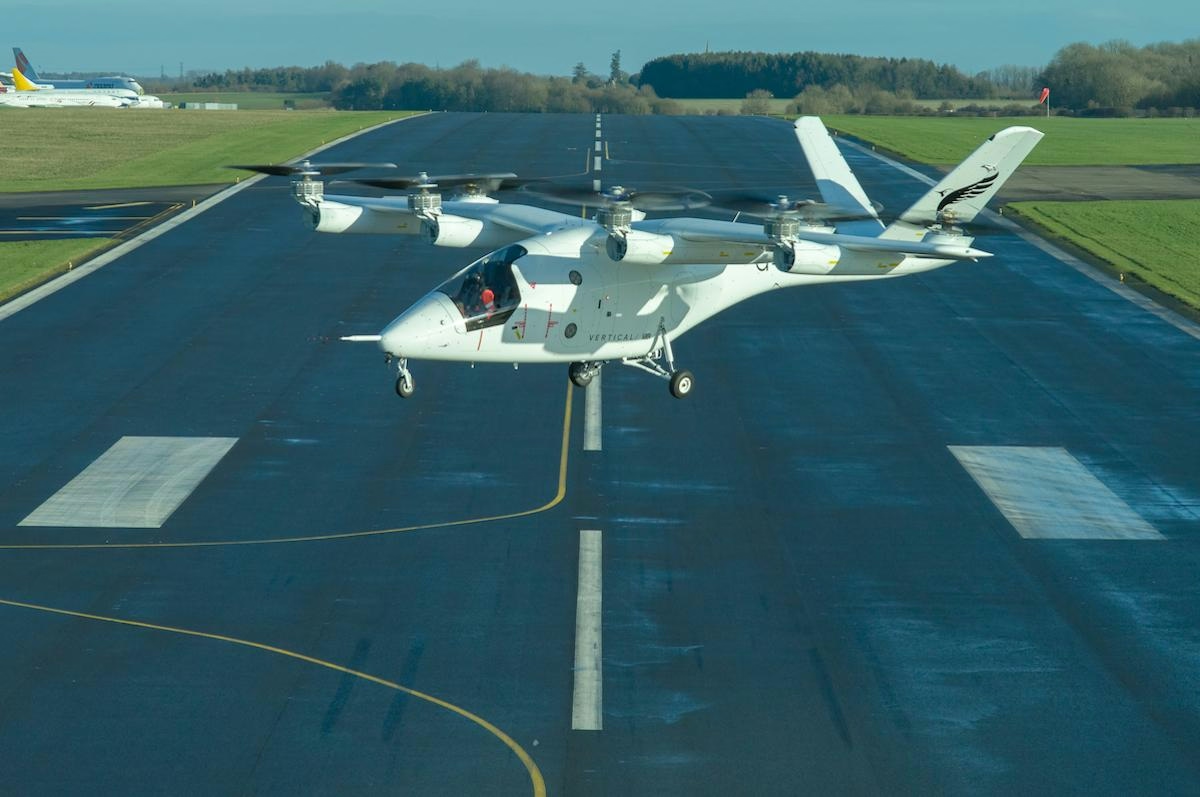
Vertical Aerospace and Bristow Advance the Future of Air Mobility
Vertical Aerospace and Bristow Advance the Future of Air Mobility
Strategic Partnership to Overcome Industry Challenges
In June 2025, Vertical Aerospace (NASDAQ: EVTL) and Bristow Group (NYSE: VTOL) announced an enhanced strategic alliance aimed at accelerating the commercialization of electric vertical take-off and landing (eVTOL) aircraft. This collaboration seeks to tackle two of the most persistent obstacles in advanced air mobility (AAM): the high costs of entry and the operational complexities involved. For investors and industry observers, the partnership represents a significant step toward transitioning eVTOL technology from a speculative concept to practical, widespread deployment.
Central to this alliance is Vertical Aerospace’s VX4 eVTOL, a four-passenger, zero-emission aircraft, which will be integrated with Bristow’s extensive global infrastructure and aviation safety expertise. Together, the companies are introducing a turnkey “ready-to-fly” model that enables customers to lease or purchase aircraft while outsourcing critical services such as maintenance, pilot training, certification, and insurance to the partners. This model, inspired by traditional airline partnerships but adapted for the unique demands of AAM, aims to reduce the capital and regulatory barriers that have historically hindered new market entrants.
This approach allows regional airlines and smaller operators to deploy VX4 aircraft for short-haul passenger services without the need for significant investment in ground crews or maintenance facilities, thereby democratizing access to advanced air mobility.
Leveraging Bristow’s Aviation Expertise and Infrastructure
Bristow brings over 75 years of experience in aviation safety, with a background spanning search and rescue, emergency medical services, and offshore operations. Its global network of Air Operator Certificates (AOCs) and Maintenance, Repair, and Overhaul (MRO) facilities will provide a robust foundation for the operational reliability of the VX4. The integration of Bristow’s safety protocols with Vertical’s cloud-connected aircraft architecture enables real-time data analysis, facilitating predictive maintenance and risk mitigation. This capability is crucial for building confidence among regulators and the public alike.
Market Dynamics and Competitive Pressures
Bristow’s commitment to pre-order up to 50 VX4 units, with options for an additional 50, signals strong confidence in the aircraft’s commercial potential. This builds on Vertical’s existing backlog of over 1,500 pre-orders from major airlines including American Airlines and Japan Airlines. The market response has been positive, with Bristow doubling its pre-orders under a wet-lease agreement, reflecting robust demand.
Nevertheless, the partnership faces significant competition. U.S.-based companies such as Archer and Joby Aviation are emerging as dominant players in Europe’s AAM market, while the collapse of European eVTOL startups like Lilium and Volocopter underscores the sector’s volatility. Vertical’s ongoing financial challenges add further uncertainty, although Bristow’s operational expertise and global reach offer a pathway to mitigate risks and expedite certification processes.
Technical Advancements and Global Expansion
The VX4’s hybrid-electric variant, unique within its class, expands its operational capabilities to include long-range missions such as emergency response and cargo transport. Recent milestones, including the aircraft’s first wingborne flight in European airspace, mark important progress toward regulatory certification. Bristow’s international presence positions Vertical to access emerging markets in Asia and the Middle East, regions where governments are actively investing in AAM infrastructure.
Outlook
The partnership between Vertical Aerospace and Bristow presents a compelling model for scaling advanced air mobility. However, the goal of achieving commercial operations by 2025 remains challenging. The competitive landscape, marked by well-funded U.S. rivals and the financial instability that has affected other European startups, highlights the hurdles ahead. Nonetheless, by combining Vertical’s technological innovation with Bristow’s operational strength, the alliance aims to establish new standards for safe, scalable, and accessible air mobility.
Ask AeroGenie